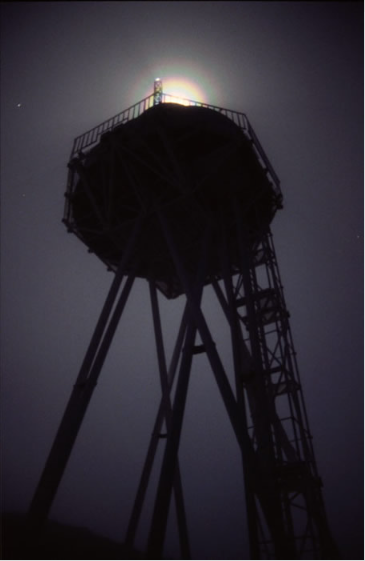Lunar corona over Dutch Open Telescope
Lunar Corona Over Dutch Open Telescope: A Spectacular Atmospheric Phenomenon
Have you ever witnessed a mesmerizing lunar corona? It's a breathtaking atmospheric phenomenon that occurs when the moonlight interacts with tiny water droplets or ice crystals in the Earth's atmosphere. The result is a stunning halo of colors encircling the moon, creating a truly enchanting sight. Recently, astrophotographer Nik Szymanek captured a remarkable lunar corona over the platform of the Dutch Open Telescope (DOT) on La Palma, an island in the Canary Islands archipelago. Let's delve into the details of this captivating event and explore the science behind it.
The Dutch Open Telescope: A Window to the Solar Realm
The Dutch Open Telescope (DOT) is a cutting-edge solar telescope located on La Palma, known for its exceptional resolution and ability to capture high-quality solar images. Its primary goal is to study the Sun and its various phenomena, such as solar flares, sunspots, and solar prominences. However, on this occasion, the DOT became the backdrop for a celestial spectacle—the lunar corona.
Capturing the Lunar Corona
Astrophotographer Nik Szymanek seized the opportunity to photograph the lunar corona as it adorned the platform of the Dutch Open Telescope. The resulting image showcases the ethereal beauty of this atmospheric phenomenon against the backdrop of the telescope's intricate structure. Szymanek's skillful photography allows us to appreciate the delicate interplay between light and atmospheric particles that gives rise to the lunar corona.
Understanding the Lunar Corona
To truly appreciate the lunar corona, it's essential to understand the science behind it. The phenomenon occurs when moonlight encounters water droplets or ice crystals suspended in the atmosphere. These tiny particles act as miniature prisms, refracting and diffracting the moonlight as it passes through them. The diffracted light then interferes with itself, creating a series of concentric colored rings around the moon.
The Colors of the Lunar Corona
The colors observed in a lunar corona are a result of the interference and diffraction of light. The innermost ring appears bluish, while the outer rings exhibit hues of red, orange, and yellow. The exact colors and their intensity depend on factors such as the size and shape of the atmospheric particles. The larger the particles, the more prominent the colors become. Additionally, the presence of ice crystals can create a more pronounced color display.
Atmospheric Optics: A Fascinating Field of Study
The study of atmospheric optics encompasses various optical phenomena, including rainbows, halos, and coronas. Scientists and researchers in this field aim to understand the behavior of light as it interacts with atmospheric particles. By studying these phenomena, they gain insights into the composition and properties of the Earth's atmosphere.
The Importance of Atmospheric Optics Research
Atmospheric optics research has practical applications in fields such as meteorology, climate science, and astronomy. Understanding how light interacts with atmospheric particles allows scientists to develop accurate models for weather forecasting, climate modeling, and remote sensing. Additionally, studying optical phenomena in the atmosphere can provide valuable information about atmospheric pollution levels and aerosol concentrations.
A Reminder of Nature's Beauty
The sighting of a lunar corona serves as a reminder of the inherent beauty present in nature's phenomena. It ignites a sense of wonder and awe, prompting us to appreciate the intricate workings of our planet's atmosphere. Events like these encourage us to pause and reflect on the interconnectedness of all natural systems and our place within them.
Capturing the Beauty of the Skies
Astrophotographers like Nik Szymanek play a crucial role in capturing these fleeting moments of celestial beauty. Their skillful photography allows us to witness and appreciate atmospheric phenomena that might otherwise go unnoticed. Through their lens, we gain a deeper understanding of the wonders that surround us and the importance of preserving and studying our natural environment.
Awe-Inspiring Moments Await
The lunar corona over the Dutch Open Telescope is just one example of the captivating atmospheric optics phenomena that grace our skies. From radiant rainbows to shimmering halos, our atmosphere holds an array of enchanting spectacles waiting to be discovered. So, keep your eyes on the skies and be prepared to be amazed by the wonders that nature has in store for us.

Lunar corona & DOT
Nik Szymanek (astrophotography site) captured this lunar corona over the platform of the Dutch Open Telescope, a high-resolution solar telescope, on La Palma .
©Nik Szymanek , shown with permission.
Note: this article has been automatically converted from the old site and may not appear as intended. You can find the original article here.
Reference Atmospheric Optics
If you use any of the definitions, information, or data presented on Atmospheric Optics, please copy the link or reference below to properly credit us as the reference source. Thank you!
-
<a href="https://atoptics.co.uk/blog/lunar-corona-over-dutch-open-telescope/">Lunar corona over Dutch Open Telescope</a>
-
"Lunar corona over Dutch Open Telescope". Atmospheric Optics. Accessed on November 26, 2024. https://atoptics.co.uk/blog/lunar-corona-over-dutch-open-telescope/.
-
"Lunar corona over Dutch Open Telescope". Atmospheric Optics, https://atoptics.co.uk/blog/lunar-corona-over-dutch-open-telescope/. Accessed 26 November, 2024
-
Lunar corona over Dutch Open Telescope. Atmospheric Optics. Retrieved from https://atoptics.co.uk/blog/lunar-corona-over-dutch-open-telescope/.